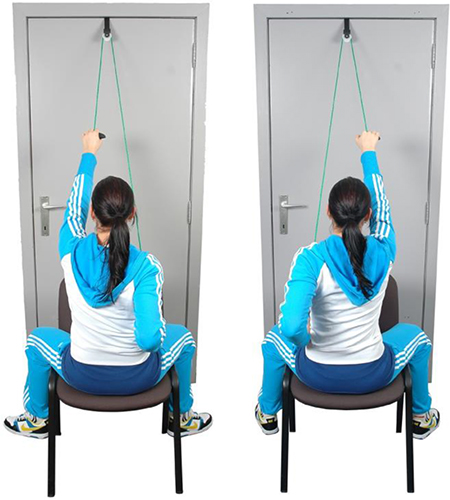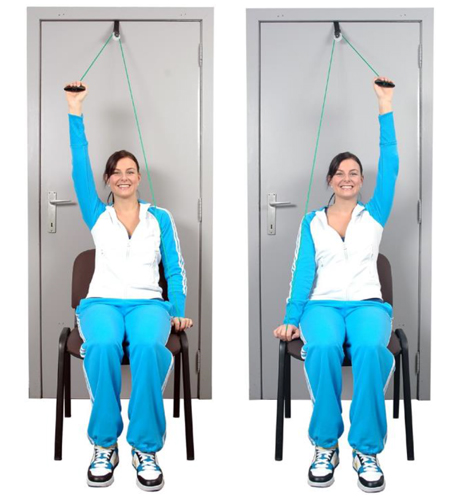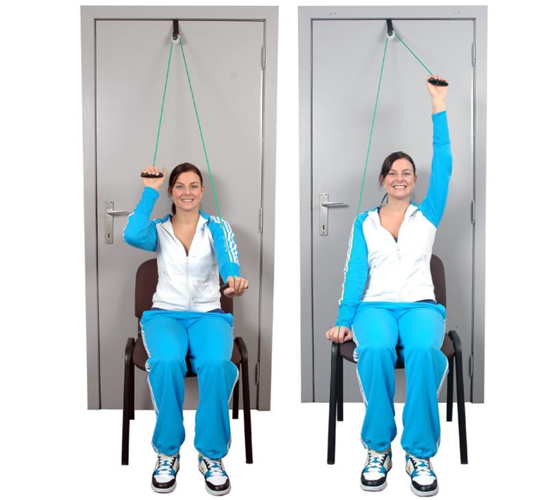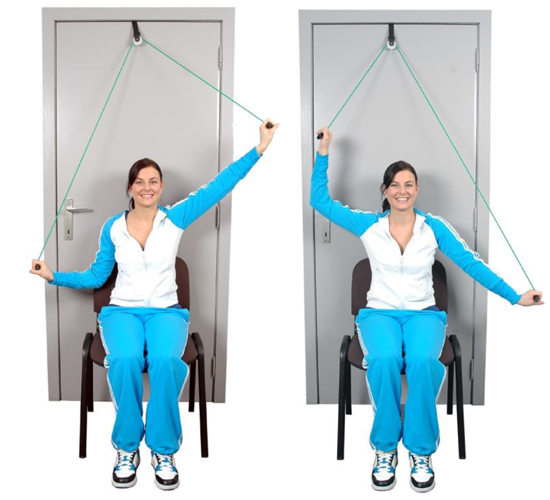Discontinued product
You found this product because it was previously in our range. We have discontinued distribution and therefore it is no longer available. However, you can still find the accessories you need to use this product!
DETAILS
The Shoulder Rope is an easy-to-use, simple tool for the prevention and rehabilitation of shoulder joint complaints.
Using it gradually improves shoulder range of motion and helps strengthen the rotator cuff muscles and other shoulder joint muscles. This is important for regaining full shoulder mobility and range of motion after shoulder surgery or for those suffering from shoulder impingement, shoulder weakness or stiff shoulders.
It is recommended for moving frozen shoulder, post-surgery, post-fracture, rotator cuff injury, inflammation, etc.
The product can be attached to any door with an "anchor". You simply slip the anchor over the top of the door and then close the door so that the anchor is wedged in.
The anchor holds a pulley to which a rope and two handles are attached. Moving one arm pulls on the opposite arm and helps the exercise.
Some Exercises with the Device
The point and goal of the exercise is to help improve range of motion in a sore shoulder with your intact arm.
With one end of the rope in your "good" hand and the other in your "bad" hand, connected by a pulley, the movement of your good hand helps the movement of the sore side.
Get the sore shoulder to the limit in the direction "as far as it will go". Hold it there for 10 to 15 seconds, then slowly lower it. Rest for a few seconds, then repeat the exercise 10-15 times. Then do another exercise. The point is to exercise the shoulder in all directions of movement!
Perform the movement with an intensity that causes no or minimal pain to the diseased side. Don't spare yourself too much, as the point should be to push the range of motion further and further!
On the first exercise, do only a few repetitions. However, with each practice, try to do more. Do not overdo it! Muscles that have been sore and immobilized for a long time can react to sudden overuse with inflammation. So gradualness is key!
Up and down - opposite the door
Put a chair by the door and sit opposite the door. Hold a handle with both hands. With your non-sore arm, pull the rope straight back and down in a slow and careful motion. Meanwhile, the sore arm moves forward and up. Hold for 10-15 seconds. Let go and repeat 10x.

Up and Down - Back to Door
Lean back to door. Hold a handle with both hands. Lift your non-sore arm up and then move it forward and down in a slow and careful motion. While doing this, move your sore arm from down to up (stretching). Hold at the edge for 10 to 15 seconds, then lower. Repeat 10x.

Lean back against door. Hold a handle with both hands. Lift your non-sore arm up and then move it forward and down in a slow, careful motion. While doing this, move your sore arm from down to up (elbow bent). Hold at the edge for 10-15sec, then lower. Repeat 10x.

Lift Down - Back to Door
Lean back to door. Hold a handle with both hands. Extend your non-hurting arm out to the side, 45 degrees up, then move it down in a slow and careful motion. Meanwhile, move your sore arm from down to up. Hold at the edge for 10 to 15 seconds, then lower. Repeat 10x.

Lay down in front of your body
Lay down sideways against the door, with your sore arm outside. Raise your non-sore hand, then move it forward and down in a slow, careful motion. Meanwhile, move your sore arm from outside to inside in front of your body. Hold it at the edge for 10 to 15 seconds, then lower it. Repeat 10x.

Left behind your body
Lean sideways against the door, with your sore arm on the outside. Raise your non-sore hand, then move it forward and down in a slow, careful motion. Meanwhile, move your sore arm from outside to inside behind your back. Keep it at the edge for 10 to 15 seconds, then lower it. Repeat 10x.


